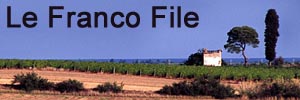 We are not normally given to reserving pitches on campsites in France. In fact, in close to 30 years, we simply hadn’t ever done so. That was largely because we never really knew where we would end up or when. Since falling in love with one particular site at Fanjeaux a few years ago, though, we’ve tended to know that we’d end up there for the last part of our trip. Since they have just four ridiculously good lakeside pitches, this year we decided to reserve one ahead of time from 12th June. A view like this from Guillaume’s windows may help to explain why.
We are not normally given to reserving pitches on campsites in France. In fact, in close to 30 years, we simply hadn’t ever done so. That was largely because we never really knew where we would end up or when. Since falling in love with one particular site at Fanjeaux a few years ago, though, we’ve tended to know that we’d end up there for the last part of our trip. Since they have just four ridiculously good lakeside pitches, this year we decided to reserve one ahead of time from 12th June. A view like this from Guillaume’s windows may help to explain why.
Our rare advanced knowledge came in handy when, on the first night of our trip, Guillaume’s incontinence reared its ugly head once again. After some debate, since we knew a future address to which they could ship spares, we opted to contact the Caravan Club’s Red Pennant service which located a replacement Whale Smartflo UV0814 water pump for us. The pump was dispatched on 31st May. We warned our future hosts to expect it and they offered to email us when it arrived.
So, two things were supposed to arrive at Fanjeaux on or before 12th June: us and the pump. On Friday 10th June, Nadine sent us the long-awaited email saying the pump had finally been delivered. I breathed a sigh of relief and immediately felt more relaxed about our holiday. Assuming I had correctly diagnosed Guillaume’s problem, my only remaining puzzle should be fitting the darn thing.
Having finished our stay around Albi and Castres, we completed the short (60 mls/85 kms) hop to Fanjeaux on Sunday morning to be warmly welcomed by Luc and Nadine. Our welcome included cups of coffee and a hefty package across which was stamped in large letters, “Express Delivery”. Admittedly, the 10 days said package had taken to arrive included a 4-day weekend in France (Ascension) but I didn’t regard the remaining six days as particularly express. However, it was here.
We completed Guillaume’s installation on Sunday, renewed our acquaintance with some other Fanjeaux addicts, and, on Monday morning before the temperature rose too much, I set about removing the old leaky pump and installing its replacement. No matter what one has in one’s toolkit from previous repairs, one never has everything needed for the latest little difficulty. I discovered that the existing electrical connector was not reusable. Fortunately, even though it was yet another public holiday (Pentecost), the local supermarché was open and I found what I needed to complete the installation.

 Just for added interest, in order to access one of the four screws that fix the pump in place, I had to remove the bed/seat support slats but eventually the plumbing joints were broken and remade, the electrical connector was cut off and replaced, and it was time for the heart-in-mouth big test. Fill the water container, switch on the pump and open a tap. The pump burst into life and Guillaume appeared to have a water system again. Furthermore, after waiting a decent length of time to spot any potential leaks, Guillaume appeared to remain dry and continent. Here’s the old ripped-out pump and the new replacement in situ to the right of that large, grey thing which is the hot water tank.
Just for added interest, in order to access one of the four screws that fix the pump in place, I had to remove the bed/seat support slats but eventually the plumbing joints were broken and remade, the electrical connector was cut off and replaced, and it was time for the heart-in-mouth big test. Fill the water container, switch on the pump and open a tap. The pump burst into life and Guillaume appeared to have a water system again. Furthermore, after waiting a decent length of time to spot any potential leaks, Guillaume appeared to remain dry and continent. Here’s the old ripped-out pump and the new replacement in situ to the right of that large, grey thing which is the hot water tank.
I never thought I’d say this but it’s wonderful to be able to do the washing-up again!
Technorati Tags:
travel,
France




































Recent Comments